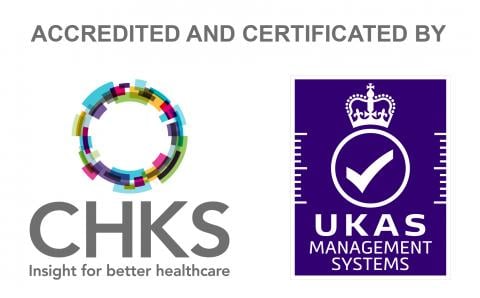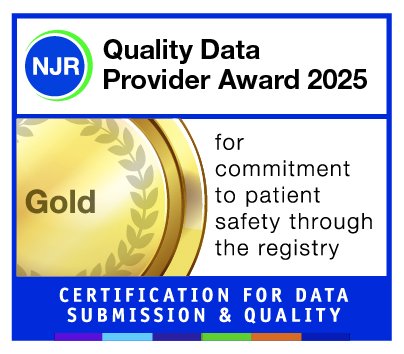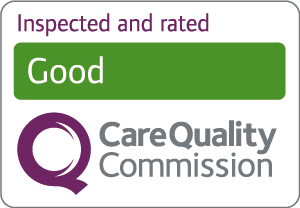
Receiving news that something unusual has been found in your breast – whether during a clinical breast examination, a scan or a biopsy – can be unsettling. Sometimes, the results show a less common type of breast lump or tumour, and it’s natural to have questions about what this means and what happens next. Understanding your diagnosis is an important part of feeling informed and empowered.
In this article, marking Breast Cancer Awareness Month, Mr Georgios Exarchos, Oncoplastic Breast Surgery Consultant at New Victoria Hospital, looks at the types of rare breast tumours, explains how they are assessed and treated.
While breast cancer is one of the most common cancers affecting women, not all breast lumps or abnormal cells are cancerous. Finding a lump in the breast is quite common, and most women will notice one or more at some point in their lives. Thankfully, the vast majority – around nine in ten – are harmless and not cancerous; however, you should see your GP or a Breast Specialist as soon as possible to rule out any serious condition.
A small number of patients are diagnosed with rare breast tumours that can range from benign (non-cancerous) to pre-cancerous or, in rare cases, malignant. Hearing that something found in your breast may be “unusual” or “rare” can feel overwhelming. Understandably, many patients want to know what this means, whether it could be cancer, and what happens next.
Understanding Uncommon Breast Tumours
When a biopsy or imaging result mentions a “high-risk” or “uncommon” breast lesion, it doesn’t necessarily mean cancer. These terms describe findings that are not entirely normal, but also not invasive cancer. They often signal an increased likelihood of developing breast cancer in the future, which means they require closer follow-up or sometimes surgical removal for a definitive diagnosis.
At New Victoria Hospital, such findings are carefully reviewed by Consultant Breast Surgeons and Breast Radiologists, working together to ensure each patient receives a clear explanation of their results and is reassured about the next steps.
High-Risk Breast Lesions
High-risk breast lesions are changes found in the breast tissue that can look abnormal under the microscope but are not yet cancer. They may be discovered incidentally during a routine screening mammogram or after a biopsy of another area.
Although most will not progress to cancer, these findings are treated with caution and often discussed in a multidisciplinary setting to decide whether monitoring or surgical removal is appropriate.
Examples include:
- Atypical ductal hyperplasia (ADH): a small increase in abnormal cells within the milk ducts.
- Flat epithelial atypia (FEA): subtle changes in the lining cells of the ducts, usually detected on mammography.
Both ADH and FEA indicate a slightly higher lifetime risk of developing breast cancer and therefore warrant tailored follow-up.
High-Risk Ductal Proliferations
The milk ducts are the tiny channels that carry milk to the nipple. Sometimes, these ductal cells grow more actively than usual, creating a proliferation that looks atypical but is still non-cancerous. Pathologists refer to this as atypical ductal hyperplasia.
Lobular Proliferations
Lobular changes involve the milk-producing glands (lobules) rather than the ducts. Two main types are seen:
- Atypical Lobular Hyperplasia (ALH): a mild overgrowth of abnormal lobular cells.
- Lobular Carcinoma in Situ (LCIS): a more extensive change where the abnormal cells fill the lobules but have not invaded surrounding tissue.
Neither ALH nor LCIS is considered invasive cancer, but both increase the long-term risk of developing breast cancer in either breast. Your Consultant will discuss whether close observation, medication to lower risk, or minor surgery to remove the area is appropriate for you.
Pre-Invasive Carcinoma
The term pre-invasive carcinoma refers to abnormal cells that resemble cancer cells but remain confined within their place of origin – they have not yet spread into nearby breast tissue. The two most recognised forms are:
- Lobular Carcinoma in Situ (LCIS): usually detected incidentally, LCIS indicates a higher risk of future breast cancer but doesn’t always require surgery.
- Ductal Carcinoma in Situ (DCIS): abnormal cells within the ducts that have not broken through the duct wall. DCIS is treated to prevent it from developing into invasive cancer.
Treatment options for DCIS may include breast-conserving surgery (lumpectomy), sometimes followed by radiotherapy, or mastectomy in more extensive cases. Your specialist will tailor the approach depending on the size, grade, and extent of the DCIS.
Invasive Breast Cancer
If the abnormal cells have spread beyond the ducts or lobules into the surrounding breast tissue, this is known as invasive breast cancer. While hearing the word “invasive” can be frightening, understanding what determines your diagnosis helps guide the right treatment plan and provides reassurance that many cases are highly treatable when caught early.
Invasive breast cancer is classified using several key features:
- Histological sub-type: describes the cell pattern seen under the microscope (e.g. ductal, lobular, tubular, mucinous).
- Histological grade: indicates how quickly the cancer cells are likely to grow – grades 1 to 3, with 1 being slow-growing.
- Lymph node stage: shows whether any cancer cells have spread to the lymph nodes under the arm.
- Biomarkers: laboratory tests on the tumour sample help guide treatment. The most important include:
- Oestrogen receptor (ER) status: cancers that are ER-positive often respond well to hormone therapy.
- HER2 status: refers to a protein on breast cells that affects how they grow and is tested to help guide treatment decisions. Only about 15–20% of early breast cancers have high levels of HER2. While these cancers used to be harder to treat, new medicines targeting HER2 have improved survival and treatment results.
- Other biomarkers and intrinsic subtypes, such as progesterone receptor and Ki-67, are used to measure tumour cell proliferation and help predict how a tumour might behave and respond to treatment.
These factors combined allow specialists to create a personalised treatment plan that balances effectiveness with quality of life.
“Being told that your results are ‘unusual’ or that you have a less common type of breast condition can understandably cause anxiety. However, most of these findings are not cancer, and even when treatment is required, outcomes are excellent when the condition is identified early.
The key is not to delay seeking advice. A prompt assessment allows us to give patients clarity, reassurance, and the most appropriate care without unnecessary worry.”
Mr Georgios Exarchos, MB BS, MRCS, FRCS, FEBS, CEBS, MSc, Oncoplastic Breast Surgery at New Victoria Hospital
How Breast Tumours Are Diagnosed
Many breast changes are first noticed during self-checks or during a routine examination. Whether you’ve felt a lump, pain or noticed a difference in the shape or size of your breast, the next step is to see a Breast Specialist who can assess your symptoms in detail and arrange any necessary tests.
Breast Clinic Services at New Victoria Hospital
At New Victoria Hospital, patients can access One Stop Breast Clinics for rapid assessment, specialist consultation, and imaging – all in one visit. If needed, a biopsy will be arranged, often on the same day. This rapid, coordinated approach helps to reduce uncertainty and allows Consultants to plan the next steps quickly, if necessary.
The diagnostic process usually includes:
- Clinical examination: A detailed consultation with a Breast Specialist who will discuss your symptoms, assess the breast and underarm area, and review any previous imaging.
- Imaging:Mammography and breast ultrasound are the main tools used to assess the breast tissue. In some cases, or for younger patients, MRI may be recommended for a more detailed view.
- Core needle biopsy: If imaging shows an area that needs further investigation, a small sample of tissue is taken using a fine needle under local anaesthetic. This is analysed by a pathologist to determine the exact nature of the cells.
For most women, these tests provide clarity and reassurance within days. If a high-risk or cancerous lesion is found, your Consultant will explain the results clearly and guide you through the treatment plan.
Self-Referral for Mammography
Even if you have no symptoms, being proactive about breast health is always beneficial. Women aged 40 and over who have not experienced breast symptoms and have not had a mammogram in the past year can self-refer for a private mammogram at New Victoria Hospital. This can provide reassurance or allow for early detection of any changes that might not yet be felt or visible.
However, it is advisable to review the mammogram results with a Breast Consultant for a full clinical discussion, as this ensures the findings are interpreted in context and reduces the risk of false negatives.
Treatment and Follow-Up
Treatment for uncommon or high-risk breast conditions depends on the type of finding, tumour type, its extent, biomarker profile, and your individual risk factors. Not all of these conditions require surgery – many can be managed safely with observation and regular imaging.
Conservative Management
For conditions such as atypical hyperplasia, flat epithelial atypia, or lobular carcinoma in situ, active monitoring may be recommended. This usually includes annual mammograms or ultrasounds, lifestyle guidance, and medication in selected cases to reduce future risk.
Surgical Treatment
If a lesion shows suspicious or uncertain features, your Consultant may advise removal for a definitive diagnosis or to reduce risk. At New Victoria Hospital, surgery is performed by Oncoplastic Breast Surgeons and Plastic Surgeons who combine advanced cancer surgery techniques with reconstructive precision, ensuring both clinical safety and the best cosmetic outcome.
Personalised Planning
Whether you’ve noticed a breast change yourself or been told that a recent scan or biopsy needs further investigation, you are not alone. Understanding your diagnosis and having access to expert care can make an enormous difference to both your peace of mind and your long-term health.
At New Victoria Hospital, patients receive expert, personalised care from accurate diagnostics to surgical management and follow-up. Procedures are carried out by experienced Oncoplastic Breast Surgeons who prioritise safety, precision, and cosmetic outcome. Every decision is discussed carefully with you, ensuring you understand your options and feel supported at every stage.
If you’re concerned about a recent breast finding or simply want reassurance from a specialist, our experienced Oncoplastic Breast Consultants are here to help. To book an appointment, please call 020 8949 9020 or complete our online enquiry form.












